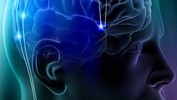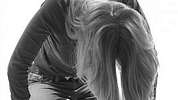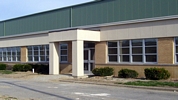|
|
 Acne (1,500) Acne (1,500)
 Addictions (1,500) Addictions (1,500)
 Advice (1,500) Advice (1,500)
 Allergies (1,092) Allergies (1,092)
 Alternative Medicine (1,500) Alternative Medicine (1,500)
 Anti Aging (1,500) Anti Aging (1,500)
 Breakup (1,500) Breakup (1,500)
 Cancer (1,499) Cancer (1,499)
 Dental Care (1,500) Dental Care (1,500)
 Disabilities (1,500) Disabilities (1,500)
 Divorce (1,500) Divorce (1,500)
 Elderly Care (1,498) Elderly Care (1,498)
 Goal Setting (1,500) Goal Setting (1,500)
 Hair Loss (1,500) Hair Loss (1,500)
 Health and Safety (1,497) Health and Safety (1,497)
 Hearing (1,500) Hearing (1,500)
 Law of Attraction (1,499) Law of Attraction (1,499)
 Marriage (1,500) Marriage (1,500)
 Medicine (1,497) Medicine (1,497)
 Meditation (1,499) Meditation (1,499)
 Men's Health (1,500) Men's Health (1,500)
 Mental Health (1,500) Mental Health (1,500)
 Motivational (1,500) Motivational (1,500)
 Nutrition (1,495) Nutrition (1,495)
 Personal Injury (1,499) Personal Injury (1,499)
 Plastic Surgeries (1,500) Plastic Surgeries (1,500)
 Pregnancy (1,496) Pregnancy (1,496)
 Psychology (1,500) Psychology (1,500)
 Public Speaking (1,500) Public Speaking (1,500)
 Quit Smoking (1,500) Quit Smoking (1,500)
 Religion (1,499) Religion (1,499)
 Self Help (1,500) Self Help (1,500)
 Skin Care (1,500) Skin Care (1,500)
 Sleep (1,500) Sleep (1,500)
 Stress Management (1,500) Stress Management (1,500)
 Teenagers (1,492) Teenagers (1,492)
 Time Management (1,500) Time Management (1,500)
 Weddings (1,500) Weddings (1,500)
 Wellness (1,500) Wellness (1,500)
 Women's Health (1,500) Women's Health (1,500)
 Women's Issues (1,500) Women's Issues (1,500)
|
When a person sustains a Traumatic Brain Injury (TBI), the immediate symptoms and eventual impairments will vary according to which brain area was injured, and whether more than one area was damaged. A brain injury to any one of the lobes or areas discussed below can be devastating to a person’s quality of life, causing permanent disabilities which require lifelong physical care.
Five Lobes in the Brain
The lobes are the general divisions of brain tissue, and each one controls different aspects of human functioning. An injury to any given area will result in impairment of the areas of functioning that area controls.
1. The Frontal Lobe
This is behind the forehead, and controls our ability to plan, organize, solve problems, and direct our attention to specific ideas or things. Our personality and behavior are controlled here also.
2. The Parietal Lobes
There are two, one on each side towards the top back of the head. The right side Parietal Lobe controls a person’s visual-spatial perception – their ability to find their way around both strange and familiar places. The left side Parietal Lobe controls understanding of language, both written and verbal. These two lobes also contain the brain’s main sensory cortex, which enables a person to assess texture, size, weight, and shape.
3. The Occipital Lobe
This lobe is below the Parietal Lobes at the back and is the brain’s vision center. This is where the brain recognizes shapes and colors and stores associations to them.
4. The Temporal Lobes
These are at the sides under the ear areas and enable a person to distinguish between different sounds and different smells. The right Temporal Lobe controls visual memory and the left controls verbal memory.
There are two very important additional areas as well:
• The Cerebellum – below the Occipital Lobe at the back. It controls balance and muscle coordination. An injury here can reduce a person’s ability to do basic daily things like talk, walk, eat, and generally take care of oneself.
• The Brainstem – at the base of the whole brain, in the center, and connecting to the spinal cord. The brainstem controls basic survival functions: heart rate, blood pressure, breathing, digestion, and arousal ability (being awake and alert). There are sub-areas: (a) the Medulla Oblongata, a kind of relay station for nerves; (b) the Midbrain, a nerve pathway which has hearing and vision reflex centers; and (c) the Pons, which holds the breathing center.
Some Causes of Brain Injury
The brain can be injured by a blow to the skull, or by the skull being pierced by something. It can also be injured by:
• Increased intracranial pressure – the skull forms a rigid container so that if any swelling occurs in the brain, there is no extra space to contain it. This will put pressure on the brain tissue and injure it.
• Severe shaking – the brain will hit up against the inside of the skull and be bruised, which can directly damage it, and can also cause swelling which will lead to increased intracranial pressure. This type of brain injury happens in Shaken Baby Syndrome and in whiplash injuries.
• Lack of oxygen – oxygen is essential to the ongoing health and function of all body tissue. A near-drowning is an example of this type of brain injury. The person may regain consciousness, but have permanent brain damage requiring long-term care.
Every brain injury is different and there are a myriad ways such an injury could happen. Symptoms may be immediate, such as unconsciousness, or delayed, as memory loss sometimes is, as well as headaches, mood swings, and difficulty with speech or hearing.
When a brain injury is caused by somebody else’s negligence, the injured person may have a valid legal claim for compensation. If you have a loved one with brain injury and would like to know more about how to deal with the legal side of the situation, consult an attorney who has long experience with brain injury litigation.
|
|
|



